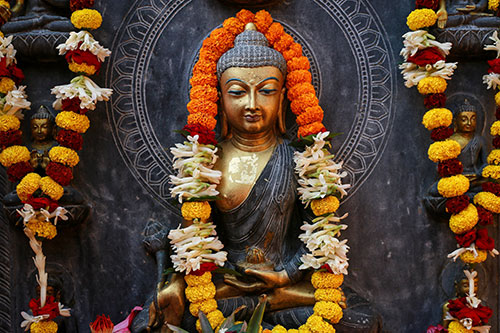 Thai religious wedding ceremonies are very often Buddhist. Such weddings consist of two parts – a Buddhist component and a secular component. While in the past, it was considered a bad sign if a Buddhist monk was present at a marriage ceremony, this superstition has changed dramatically over time and today, most couples visit Buddhist temples on their wedding day or even perform the ceremony there.
Thai religious wedding ceremonies are very often Buddhist. Such weddings consist of two parts – a Buddhist component and a secular component. While in the past, it was considered a bad sign if a Buddhist monk was present at a marriage ceremony, this superstition has changed dramatically over time and today, most couples visit Buddhist temples on their wedding day or even perform the ceremony there.
Why did it use to be bad luck to have a Buddhist monk at a wedding? Years ago, the religious rules were a bit different, stricter. Buddhist monks were required to attend to the dead during funerals, so they weren’t allowed to weddings because people believed they could bring death instead of fertility and happiness. So, people didn’t invite monks to the actual wedding and didn’t visit temples on the wedding day. The monks still played their role in the union of two people – they gave astrological advice regarding the date of the wedding and the like. Also, Thai couples attended Buddhist temples to ask for a blessing but always before or after the wedding day.
Although these days, this tradition has changed. It is typical today to visit Buddhist temples during the wedding or even have a religious marriage ceremony right in a temple. Most people still divide a religious ceremony from a secular one but not as strictly as before. For example, the monks can come to the wedding to perform the official ceremony, receive offerings from the couple, and go back to their temple, leaving the couple to celebrate.

During a Buddhist wedding ceremony, Thai brides and grooms show their respect to god – they bow before the image of the Buddha. They recite certain basic Buddhist prayers and light incense and candles before the image. Their parents place on the heads of the bride and groom twin loops of string or thread that symbolize their union. After the ceremony, the newlyweds make offerings to the monks – money, food, flowers, medicine, etc. And the monks bless the couple, chant prayers, and perform traditional wedding rituals.
Here’s one of such rituals. The monks take a container of fresh water prepared in advance, mix some of the water with wax drippings from a candle lit before the Buddha image, add some special herbs and components, and make a paste. This sacred paste is applied to the foreheads of the bride and groom in the shape of a small dot. This is a way of blessing the couple and their union.
One of the high-ranking monks says a speech to the newlyweds, gives them some pieces of advice for their marriage.
With this, the religious part of a Buddhist wedding ceremony ends and the wedding reception and further celebration begin.

